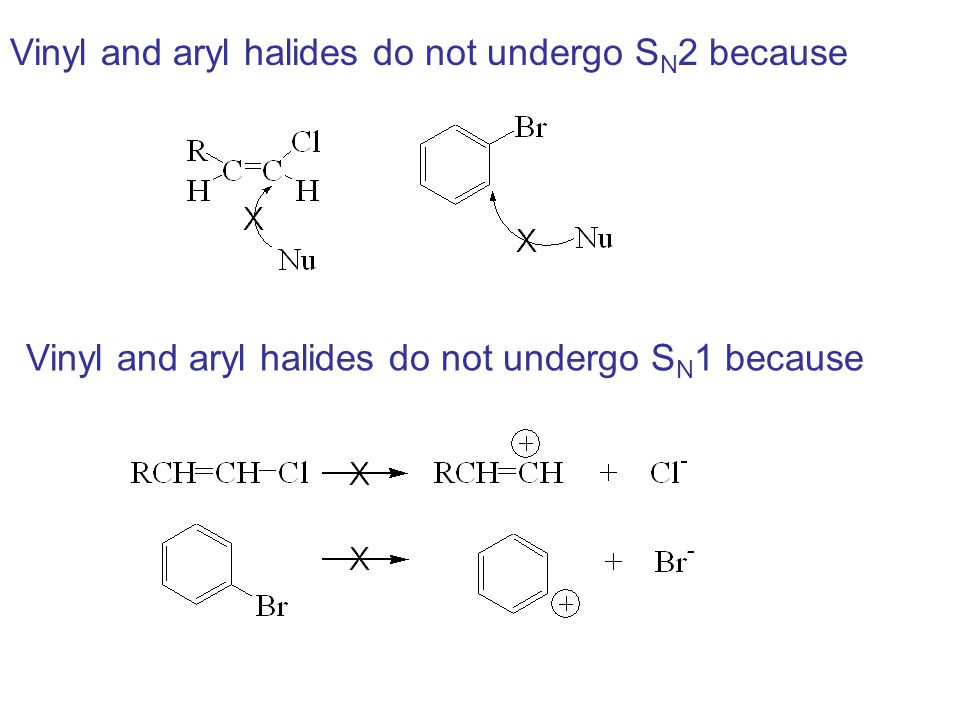Allylic halides and tosylates are excellent electrophiles for bimolecular nucleophilic substitution reactions s n 2.
Sn2 vinyllic halide.
A sn2 mechanism is not favoured for 3 reasons.
There are many cases where allylic halides react preferentially by an mathrm s n 1 process.
A sn1 sn2 mechanism on vinyl halide would look like this.
The picture below helps explain why this reaction is so much more difficult energetically more costly than the more common solvolysis of an alkyl halide.
The student asked why do vinyl halides not do the sn2 reaction my answer was that two reasons exist for why the vinyl halide will not react with a nucleophile.
From the perspective of applications the dominant member of this class of compounds is vinyl chloride which is produced on the scale of millions of.
The substituents around a double bond are within the same plane therefore an s math n math 2 would give steric hindrance.
A s math n math 2 mechanism is not favoured for 3 reasons.
The resultant vinylic carbocations are actually stable enough to be observed using nmr spectroscopy.
Haloalkanes haroarenes part 1.
They exhibit faster s n 2 reactivity than secondary alkyl halides because the bimolecular transition state is stabilized by hyperconjugation between the orbital of the nucleophile and the conjugated pi bond of the allylic.
826 chapter 18 the chemistry of aryl halides vinylic halides and phenols.
Today i got a good question i want to make a point of posting the best question from the day s teaching and my answer.
For this reason alkenyl halides with the formula rch chx are sometimes called vinyl halides.
We can shift from one mechanism to the.
A sn1 sn2 mechanism on vinyl halide would look like this.
Why do allylic halides prefer sn2 reaction over sn1.
S n 2 reactions of allylic halides and tosylates.
Since both the allylic mathrm s n 1 and mathrm s n 2 reactions are stabilized there is a delicate balance between the two pathways.
The substituents around a double bond are within the same plane therefore an sn2 would give steric hindrance as depicted in the above scheme.
Nucleophilic substitution reactions sn1 and sn2 mechanism.
In organic chemistry a vinyl halide is a compound with the formula ch 2 chx x halide the term vinyl is often used to describe any alkenyl group.
Because the bond between the halogen and the carbon in the benzene ring aryl halide or a carbon participating in a double bond vinylic halide is much too strong stronger than that of an alkyl.
Solvolysis of vinyl halides in very acidic media is an example.
Chemistry concept 2 058 views.

